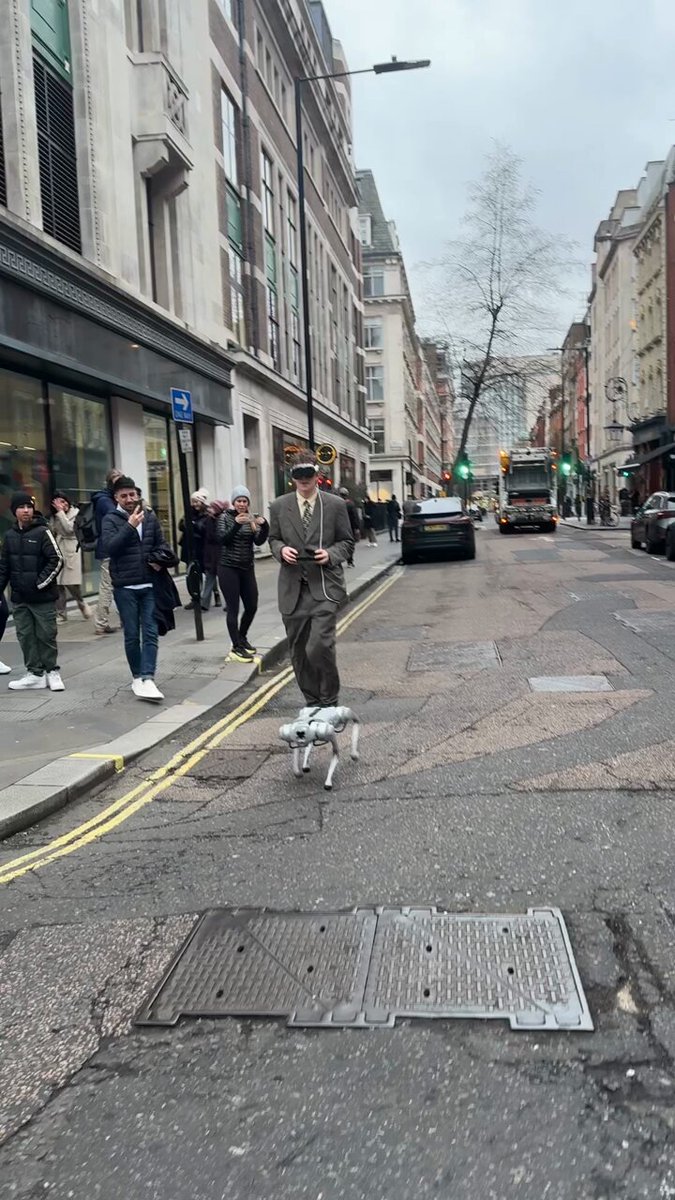
Spatial computing merges the physical and virtual worlds, enabling revolutionary interactions with technology through devices like Apple's Vision Pro. This evolving field promises to transform communication, manufacturing, gaming, and more by integrating AI, AR, and VR, setting the stage for a future where digital and physical experiences are indistinguishably intertwined. How will spatial commuting impact our lives and our businesses? And who are the players bringing it to the market?
Three // Perspectives:
Apple: premium, high-end device targeting a B2B audience (developers)

Apple Vision Pro Apple's Vision Pro represents a strategic pivot towards premium spatial computing, emphasizing unparalleled visual quality and immersive augmented reality (AR) experiences over cost competitiveness.
Priced at $3,500, it's designed as a high-end, minimum viable product that sets a new standard for AR and VR devices. Apple aims to catalyze an ecosystem around this technology, focusing on quality, privacy, and a seamless blend of virtual and physical worlds, envisioning a future where spatial computing is integral to daily life. The first versions will not be targeted at consumers but rather at tech developers to build the ecosystem. In the future it is expected that Apple will release cheaper versions (a lite version for example) making it more accessible and targeting mass markets. Similar to how the Iphone was launched.
Meta: mass adoption, affordable consumer focus

Meta Quest 3 Meta positions itself as a leader in spatial computing by prioritizing affordability, accessibility, and a strong focus on gaming. With the launch of Quest 3, Meta aims to make advanced virtual experiences widely available, emphasizing high-quality, cost-effective solutions to bring spatial computing to the mainstream. Their iterative development approach and emphasis on gaming as a key application demonstrate Meta's strategy to engage a broad user base and foster widespread adoption of VR technologies.
 Watch how Mark Zuckerberg tests the Vision Pro and compares it to Meta's Quest
Watch how Mark Zuckerberg tests the Vision Pro and compares it to Meta's QuestSamsung: bridging the gap between premium and affordable
Samsung, in partnership with Google and Qualcomm, is recalibrating its strategy in the high-end mixed reality sector to rival Apple's Vision Pro by focusing on superior visual experiences with enhanced resolution. With a revised launch timeline for the end of 2024 and a production goal of 30,000 units priced at $2,000 each, Samsung aims to bridge the gap between premium and affordable VR options, targeting a significant presence in the spatial computing landscape.
Bonus perspectives
The lover: Matthew Ball - Author of ‘The Metaverse’:
Matthew Ball envisions spatial computing and the metaverse as the next significant frontier in digital interaction, where the internet transitions from a service we access to an immersive environment that surrounds us. Ball suggests that this evolution will require new devices, like AR/MR glasses, and advanced AI to navigate and manage both the tangible and intangible aspects of our lives, hinting at a profound shift in how we perceive and interact with digital information and each other.
 Book: The Metaverse and how it will revolutionize everything
Book: The Metaverse and how it will revolutionize everything
The hater - Scott Galloway: Scott Galloway views Apple's Vision Pro as a destined commercial failure, criticizing it as an impractical, high-cost venture that deviates from human connectivity essentials. He attributes its creation to competitive motives against Meta rather than genuine consumer need, suggesting Apple missed broader opportunities for impactful innovation.
 Scott's take on Apple's Vision Pro
Scott's take on Apple's Vision Pro
The Visionary:
Noteworthy concepts:
Spatial Computing: Spatial computing is any of various human–computer interaction techniques that are perceived by users as taking place in the real world, in and around their natural bodies and physical environments, instead of constrained to and perceptually behind computer screens.
Metaverse: An expansive virtual shared space, formed by the convergence of enhanced physical reality, augmented reality (AR), and the internet, facilitating rich social and economic interactions.
Augmented Reality (AR): A technology that superimposes digital data onto the real world, augmenting one's physical environment with interactive digital elements accessible via smartphones or AR glasses.
Virtual Reality (VR): Immerses users in entirely digital landscapes, separate from reality, through the use of VR headsets, offering profound interactive experiences for gaming, education, and virtual meetings.
Haptic Feedback Technologies: Systems designed to simulate tactile sensations, providing realistic touch feedback in digital environments, enhancing the immersion and realism of AR and VR experiences.




 18.4K
18.4K